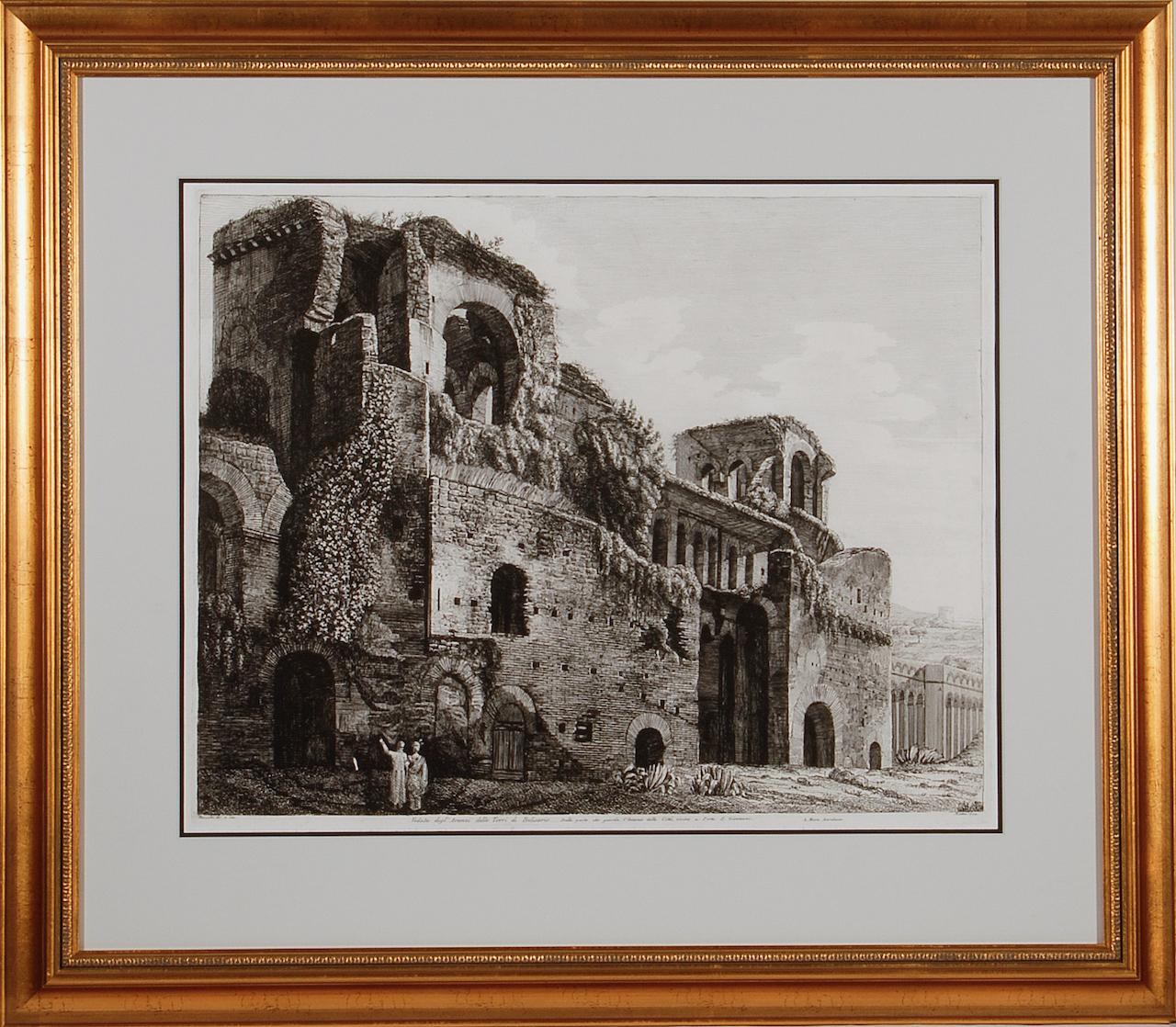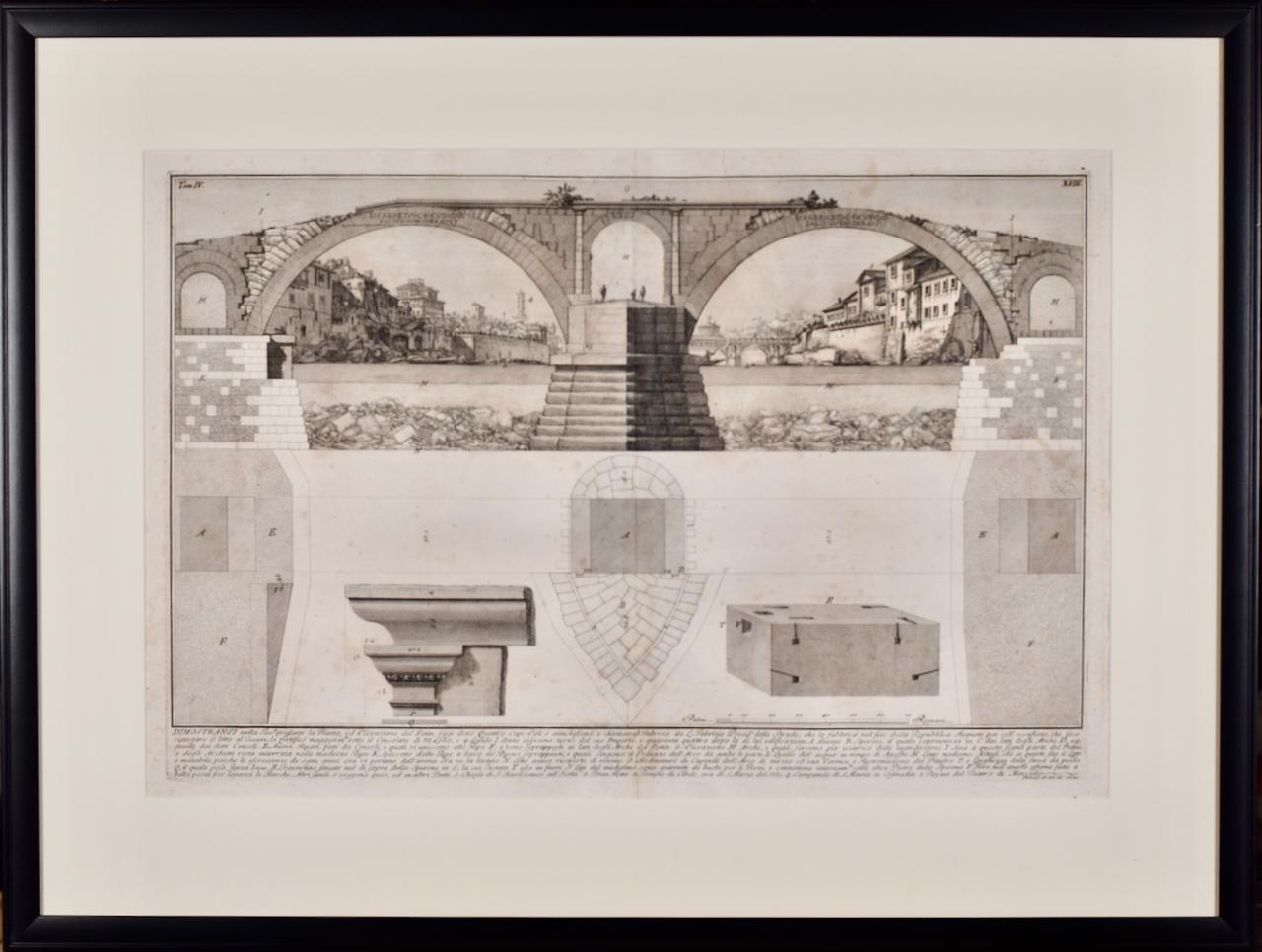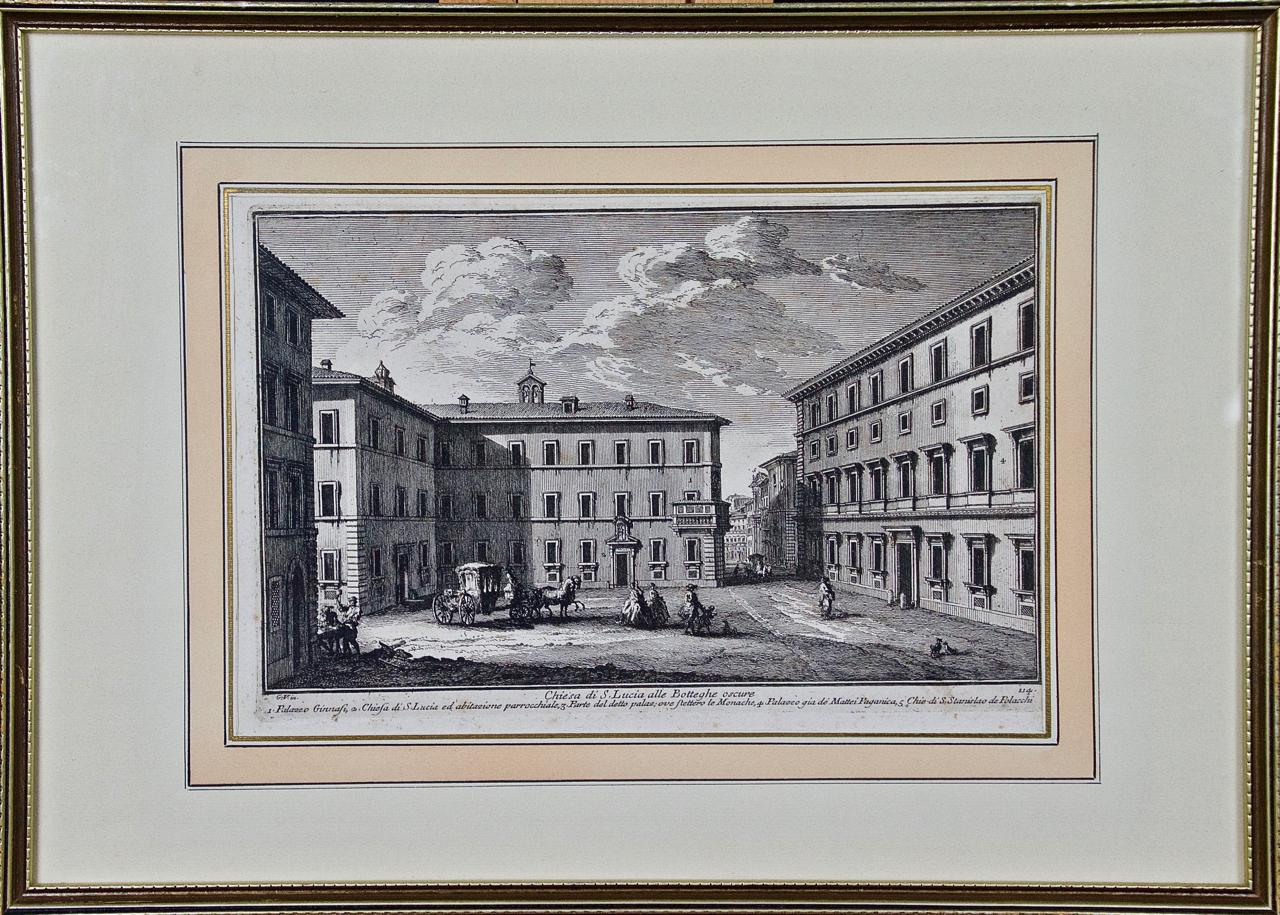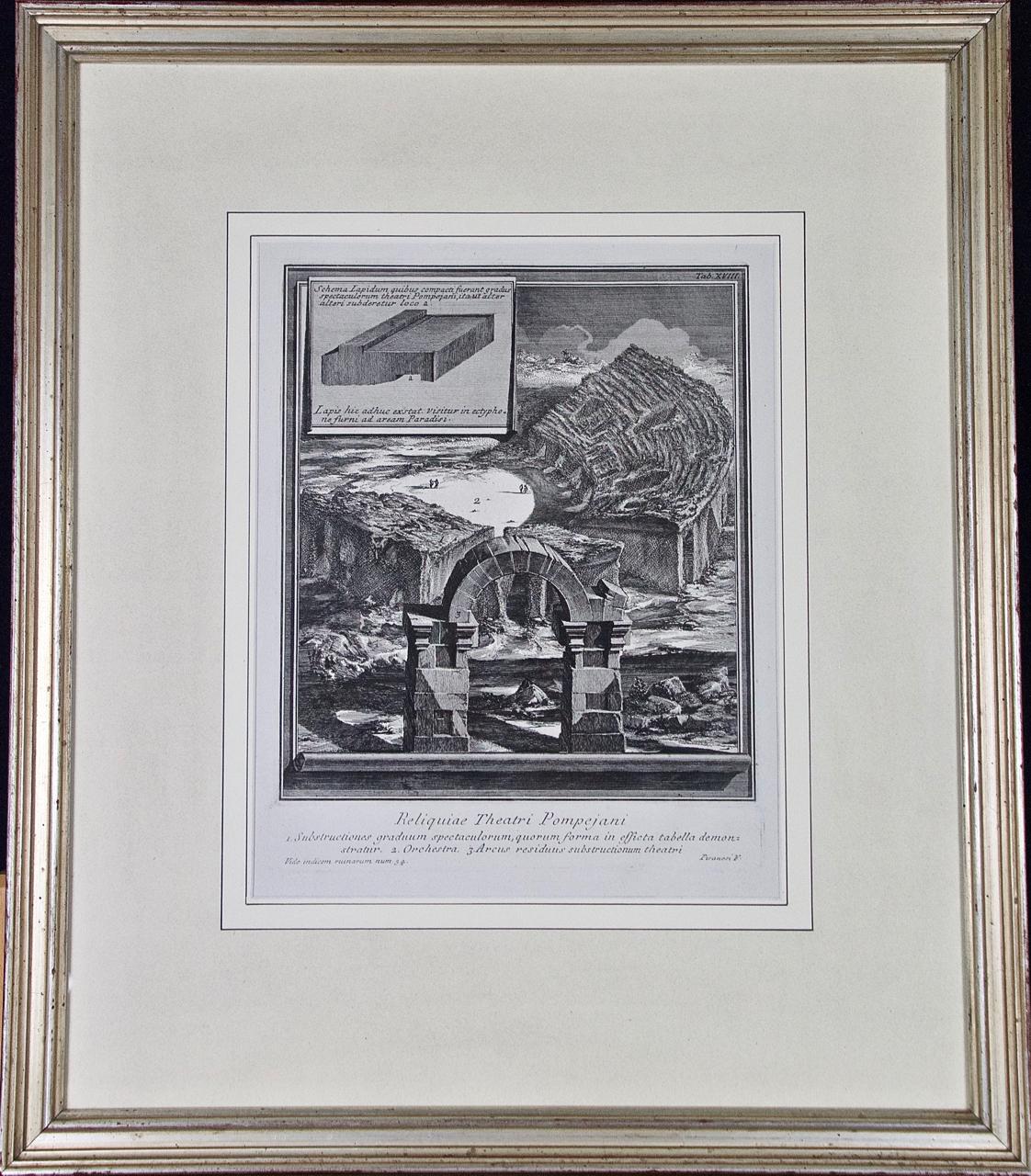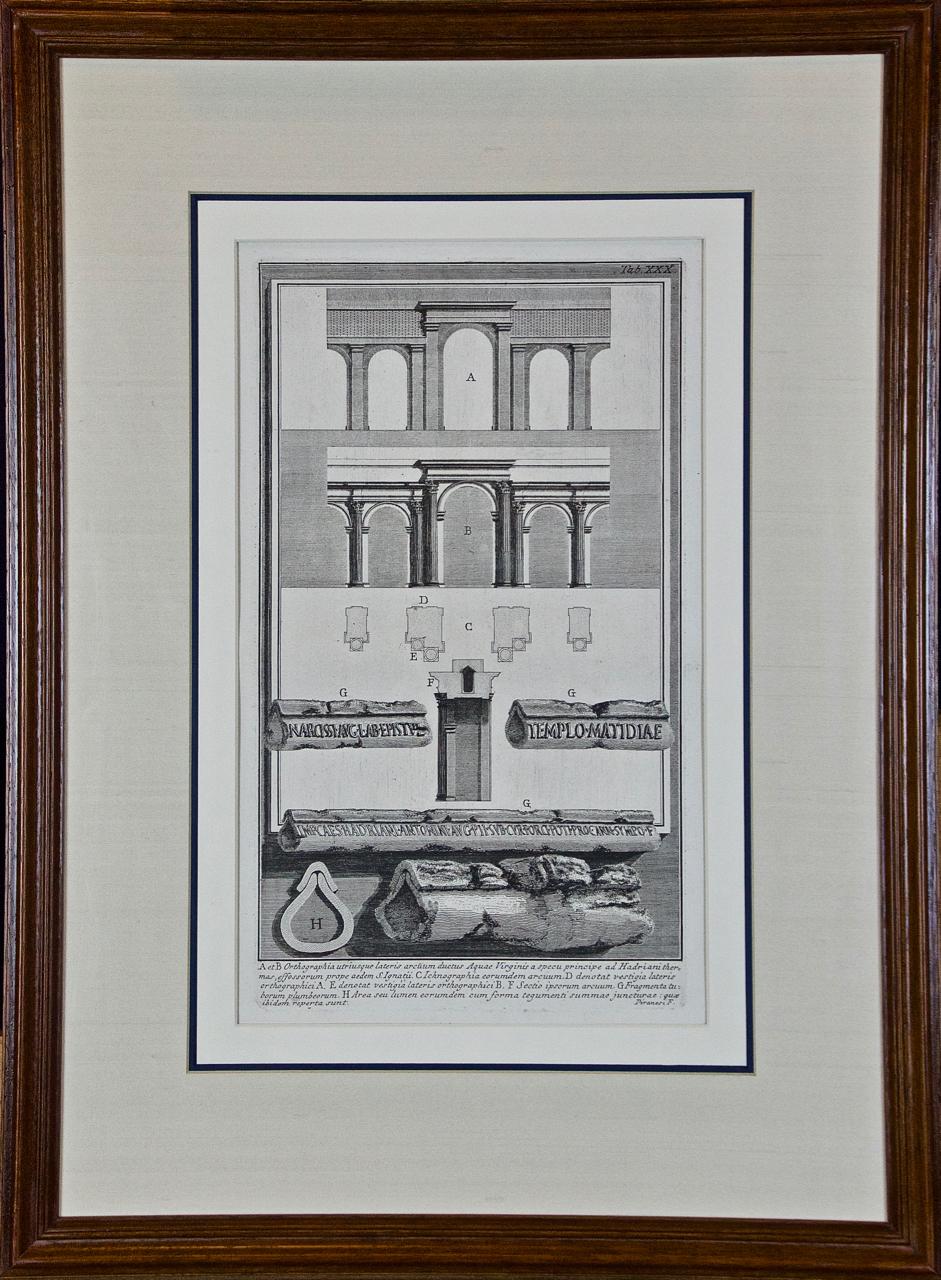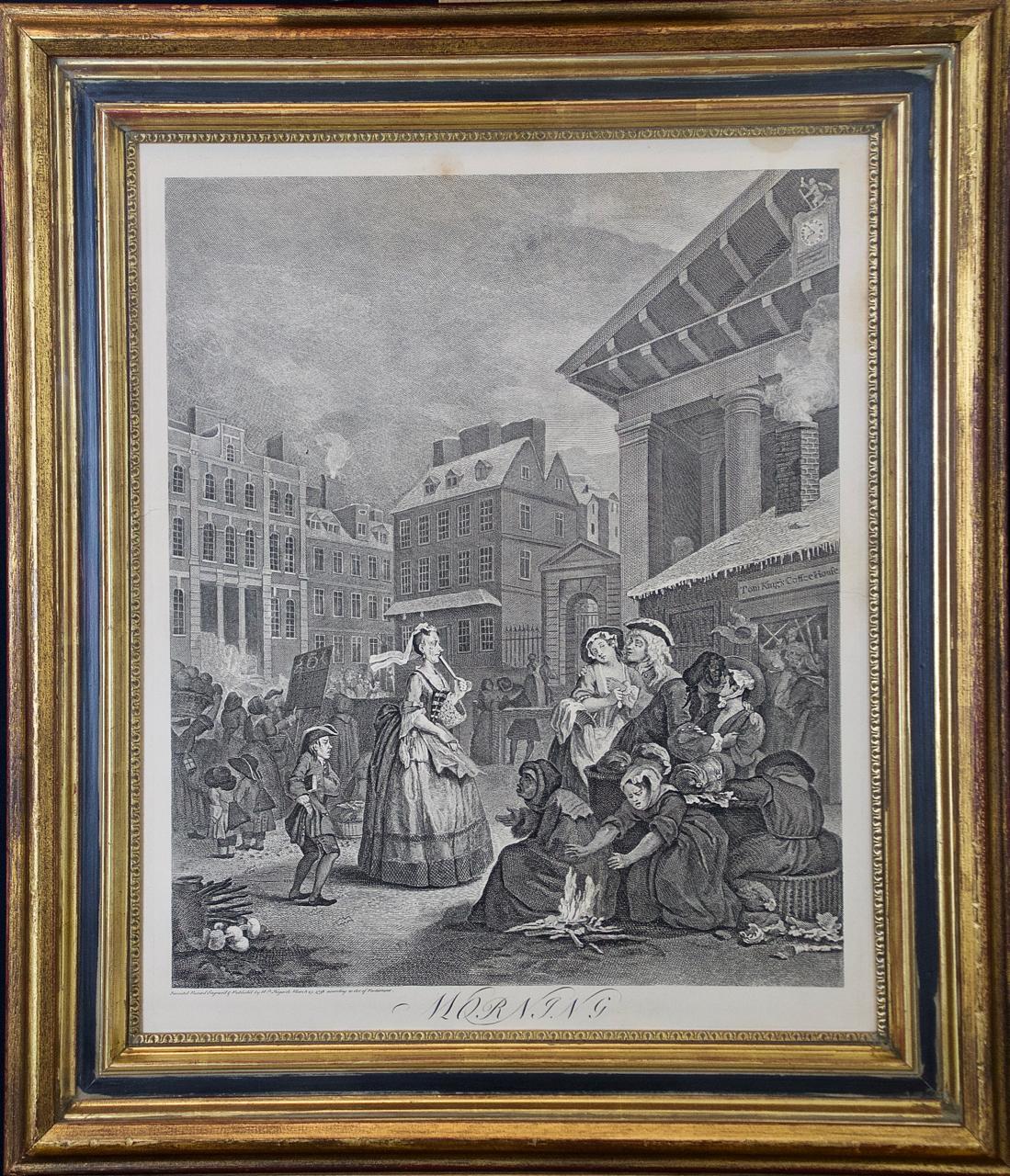Items Similar to Suite of 12 Views of Italy
Want more images or videos?
Request additional images or videos from the seller
1 of 7
Franz Weirotter Suite of 12 Views of Italy1759
1759
About the Item
Franz Weirotter (1730-1771), Suite of 12 Views of Italy, etchings, 1759 [most signed in the plate by Weirotter]. Reference: Nagel 5. 10 printed in pairs on one sheet; one on a smaller sheet (still with margins), and the larger frontispiece on a single sheet. In generally satisfactory condition, browning toward the outer edge of the sheets, occasional foxing, soiling or staining, some other defects affecting outer edges but not the images. Each of the paired compositions about 6 1/2 x 8 1/4 inches on sheets 16 3/4 x 10 3/8; the frontispiece 7 1/4 x 10 5/8 on a sheet 16 3/4 x 10 3/8 inches. All on laid paper, most with a Bunch of Grapes watermark.
Very good/fine impressions; the impression of Viterbo possibly a proof before the signature (and printed with some ink/soiling); the rest with the Weirotter signature clearly printed.
Although these views were made in Rome or its outskirts, Tivoli, Viterbo, etc., they are not generally of well-known monuments or vistas but rather portraits of the Italian countryside, often depicting relatively modest structures with nearby ruins, and generally with people busily engaged in fishing, talking, preparing food, or otherwise engaged.
Weirotter was one of the most distinguished of the German 18th Century landscape etchers. Although many of these printmakers specialized in reproducing the work of others, Weirotter tended to create original compositions for his prints. The 12 plates in this set are original Wierotter compositions, although they are remindful of the work of 17th Century Dutch artists such as Jan van Goyen, Pieter Molyn, or Jacob van Ruisdael. Hind noted of Weirotter that he was “most successful when he keeps to plates of the small dimensions, to which his delicate and clearly etched line is fitted.”
- Creator:Franz Weirotter (1730 - 1771, German)
- Creation Year:1759
- Medium:
- Movement & Style:
- Period:1750-1759
- Condition:Condition ok but with minor defects as described.
- Gallery Location:New York, NY
- Reference Number:1stDibs: LU51531541503
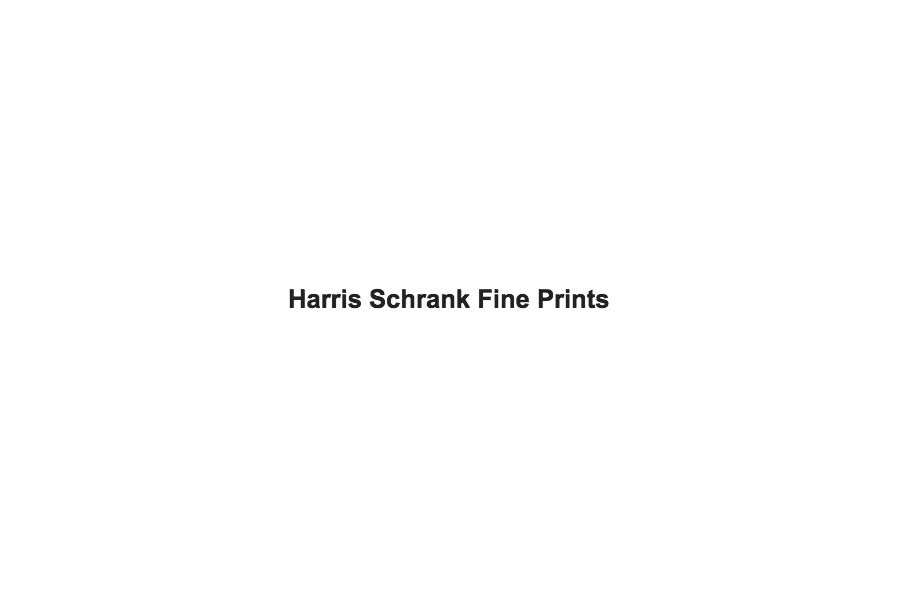
About the Seller
4.9
Recognized Seller
These prestigious sellers are industry leaders and represent the highest echelon for item quality and design.
Established in 2000
1stDibs seller since 2016
99 sales on 1stDibs
Typical response time: 3 hours
Associations
International Fine Print Dealers Association
- ShippingRetrieving quote...Ships From: New York, NY
- Return PolicyA return for this item may be initiated within 7 days of delivery.
More From This SellerView All
- The AnglersBy Adriaen van OstadeLocated in New York, NYAdriaen Van Ostade (1610-1685) etching The Anglers, circa 1647, Godefry 26, Bartsch 26. Very good condition, with small (1/2 inch) margins, on cream laid paper, archival mounting. 4 ...Category
1640s Old Masters Landscape Prints
MaterialsEtching
- The AnglersBy Adriaen van OstadeLocated in New York, NYADRIAEN VAN OSTADE (1610-1685) The Anglers etching, circa 1647-53, on laid paper, without watermark, a very fine impression of the rare third/ fourth state (of seven), printing with a light plate tone, with traces of burr on the bridge and elsewhere and fine wiping marks, with narrow margins, in very good condition. References: Bartsch, Hollstein, Godefroy 26, plate 113 x 166 mm., sheet 116 x 169 mm. Provenance: Richard Fisher...Category
1640s Old Masters Landscape Prints
MaterialsEtching
- Le Moulin AbandonnéBy Jean-Emile LaboureurLocated in New York, NYJean-Emile Laboureur (1877-1943), Le Moulin Abandonne, etching and engraving, 1934, signed lower left and numbered and annotated “imp” in pencil lower right....Category
1930s Mannerist Landscape Prints
MaterialsEngraving, Etching
- Narrow Street in Rouen (Petite Rue Nationale, a Rouen)By Camille PissarroLocated in New York, NYCamille Pissarro (1830-1903), Narrow Street in Rouen (Petite Rue Nationale, a Rouen), etching, drypoint, maniere grise, aquatint, 1896, signed in pencil lower right, numbered (No 6) ...Category
1890s Impressionist Landscape Prints
MaterialsDrypoint, Etching, Aquatint
- Les Deux ChaumieresBy Jean-Emile LaboureurLocated in New York, NYJean-Emile Laboureur (1877-1943), Les Deux Chaumieres, 1927-28, etching and engraving, signed in pencil lower left and numbered lower right. Laboureur 356, second state (of 4). One o...Category
1920s Post-Impressionist Landscape Prints
MaterialsEngraving, Etching
- House in the WoodsBy Jean-Emile LaboureurLocated in New York, NYJean-Emile Laboureur (1877-1943), Le Chemin de la Foret, etching and engraving, 1926, signed in pencil lower left and inscribed epreuve d’artiste lower right. Reference: Laboureur 32...Category
1920s Modern Landscape Prints
MaterialsEngraving, Etching
You May Also Like
- Ruins of the Roman Baths of Belisarius: A 19th C. Etching by Luigi RossiniBy Luigi RossiniLocated in Alamo, CAThis early 19th century etching entitled "Veduta degl' Avanzi delle Torri di Belisario Dalla parte che guarda l' Interno della Città, vicino a Porta S. Giovanni, A. Mura Aureliane" (...Category
1820s Old Masters Landscape Prints
MaterialsEtching
- Fabricius (Ponte Cestio) Bridge : Framed 18th C. Piranesi Architectural EtchingBy Giovanni Battista PiranesiLocated in Alamo, CAThis framed 18th century etching by Giovanni Battista Piranesi is entitled "Dimostransi nella Tav. presente la Pianta, ed Elevazione del Ponte, oggi detto Quattro Capi egli è antichissimo, e chiamavasi Fabrizio da L. Fabrizio Presid. delle Strade, che lo fabbrico' nel fine della Repubblica. "(The Plan and Elevation of the Bridge, today called Quattro Capi. The architect is very ancient, and was called Fabrizio da L. Fabrizio Presid. delle Strade, who built it at the end of the Republic). This is plate 18 in volume 4 of Piranesi's "Le antichita romane opera di Giambatista Piranesi architetto veneziano" (Roman antiquities by Giambatista Piranesi Venetian architect). It was published in Rome in 1756-1757. This etching depicts the plan and elevation of the bridge now called the Ponte dei Quattoro Capi or Ponte Cestio (Bridge of the Four Heads), which in antiquity was called the Bridge of Fabricius after L. Fabricius, the Superintendant of the Streets who built it at the end of the Republic, around 62 BC. It was also been known in the Middle Ages as ‘Ponte Giudeo’ (Bridge of the Jews). The bridge crossed from the left bank or northeast side of the Tiber River to Tiber Island...Category
1750s Old Masters Landscape Prints
MaterialsEtching
- 18th Century Etching of "Chiesa di S. Lucia" in Rome by Giuseppe VasiBy Giuseppe VasiLocated in Alamo, CAThis 18th century etching is entitled "Chiesa di S. Lucia alle Botteghe Oscure" by Giuseppe Vasi was published in Rome in 1747 in Vasi's 'Magnificenze di Roma Antica e Moderna', whic...Category
Mid-18th Century Old Masters Landscape Prints
MaterialsEtching
- Piranesi 18th C. Etching "Reliquiae Theartri Pompejani" an Ancient Roman TheaterBy Giovanni Battista PiranesiLocated in Alamo, CAThis a framed Giovanni Battista Piranesi (1720-1778) etching entitled "Reliquiae Theartri Pompejani" (Remains of the Theatre of Pompey) from "Il Campo Marzio dell'Antica Roma" (The C...Category
Mid-18th Century Old Masters Landscape Prints
MaterialsEtching
- Piranesi Etching of Hadrian's Ancient Roman Aqueduct and Baths, "Aquae Virginis"By Giovanni Battista PiranesiLocated in Alamo, CAThis is a framed Giovanni Battista Piranesi (1720-1778) etching entitled "Orthographia utriusque lateris arcuum ductus Aquae Virginis a specu principe ad Hadriani thermas, effossorum...Category
Mid-18th Century Old Masters Landscape Prints
MaterialsEtching
- Four Framed Hogarth Engravings "Four Times of the Day"By William HogarthLocated in Alamo, CAThe four plates in this "Four Times of the Day" set were created utilizing both engraving and etching techniques by William Hogarth in 1738. Hogarth's original copper plates were refurbished where needed by James Heath and these engravings were republished in London in 1822 by Braddock, Cradock & Joy. This was the last time Hogarth's original copper plates were used for printing. Most were melted down during World War I for the construction of bombs. Printed upon early nineteenth century wove paper and with large, full margins as published by William Heath in 1822. The inscription below each print reads "Invented Painted & Engraved by Wm. Hogarth & Publish'd March 25. 1738 according to Act of Parliament". These large folio sized "Four Times of the Day" engravings/etchings are presented in complex gold-colored wood frames with black bands and scalloped gold inner trim. A majority of each thick impressive frame is covered with glass applied near the outer edge. Each frame measures 25.75" high, 22.25" wide and 1.88" deep. There are a few small dents in the edge of these frames, which are otherwise in very good condition. "Morning" has two focal areas of discoloration in the upper margin and some discoloration in the right margin, a short tear in the left margin and a short tear or crease in the right margin. "Noon" has a spot in the upper margin that extends into the upper image, but it is otherwise in very good condition. "Evening" has a faint spot in the upper margin, but it is otherwise in very good condition. "Night" is in excellent condition. The "Four Times of the Day" series is in the collection of many major museums, including: The British Museum, The Metropolitan Museum of Art, The Tate Museum, The Chicago Art Institute and The Victoria and Albert Museum. Through this series Hogarth is portraying early 18th century London street life at "Four Times of the Day". His characters are exhibiting their personalities, quircks, strange activities, but he also wants to draw attention the disparities between the wealthy aristocracy and the common working class. Plate 1, "Morning" depicts morning in Covent Garden in the winter in front of Tom King...Category
Mid-18th Century Old Masters Landscape Prints
MaterialsEngraving, Etching
